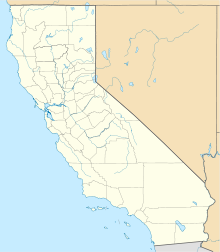Reuben H. Fleet Space Theater and Science Center
 |
|
| Established | 1973 |
|---|---|
| Location | 1875 El Prado Drive, Balboa Park, San Diego, California 92101 |
| Director | Dr. Steve Snyder |
| Public transit access | San Diego Metropolitan Transit System bus routes |
| Website | http://www.rhfleet.org/ |
The Fleet Science Center (previously the 'Reuben H. Fleet Science Center') is a science museum and planetarium in Balboa Park, located in San Diego, California. It is at the east end of the El Prado Drive walkway, next to the Bea Evenson Fountain and plaza in central Balboa Park.
Established in 1973, it was the first science museum to combine interactive science exhibits with a planetarium and an IMAX Dome (OMNIMAX) theater, setting the standard that most major science museums follow today.
The facility is named for aviation pioneer Reuben H. Fleet, who founded the U.S. Air Mail service. Fleet's San Diego-based company, Consolidated Aircraft, built several of the famous aircraft of World War II, including the B-24 Liberator and PBY Catalina. Fleet and his family made the initial gift which established the Science Center.
Throughout the 1960s, the San Diego Hall of Science (now known as the San Diego Space and Science Foundation) was planning a new planetarium for San Diego's Balboa Park, with the possibility of an adjacent science hall. The site on Laurel Street opposite the San Diego Natural History Museum was reserved in 1963.
The planetarium incorporated several innovative features. It was to be used for both large-format film presentations and traditional planetarium shows. The 76-foot-diameter (23 m) dome would be tilted 25 degrees. The audience would be placed in tiered rows facing outward into the tilted dome to give the feeling of being suspended in space and looking forward, rather than looking upward into an overhead dome. The founders also wanted to eliminate the large dumbbell-shaped star projector used in traditional planetariums, which juts from the center of the room and blocks part of the view, and would interfere with the movies being projected onto the dome.
The San Diego Hall of Science approached Spitz Laboratories to create a new type of star projector that would not obstruct the view for part of the audience or interfere with the movie projection system. Spitz created a servo-controlled "starball" that became the centerpiece of the system, dubbed a "Space Transit Simulator". The spherical star projector and a number of independent planet projectors maintained a low profile while projecting a realistic sky for the astronomy presentations. These elements, along with a number of slide projectors and lighting systems, were all controlled by a PDP-15 minicomputer.
...
Wikipedia



